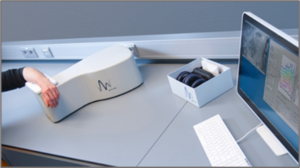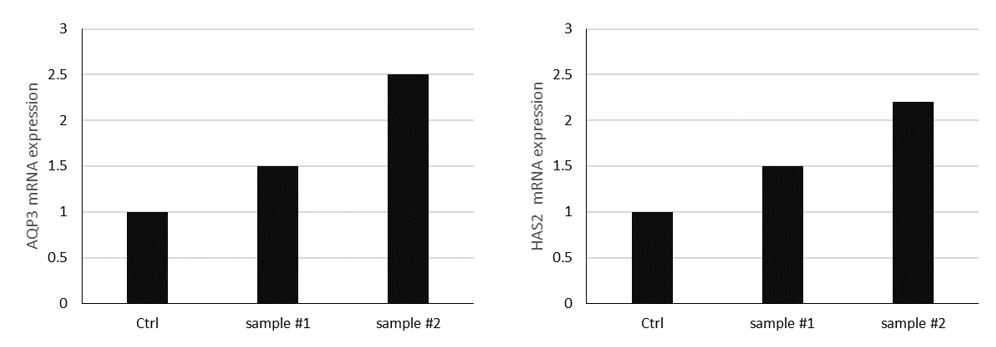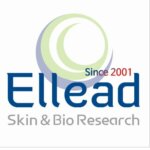Ellead presents a total solution for skin moisturizing evaluation through in vitro and clinical tests
22 December 2021
There are many evaluation methods to check the moisturizing effect of the skin, and Ellead evaluates not only the skin moisture but also trans-epidermal water loss through various equipment. Raman Spectroscopy is the most powerful tool to directly evaluate skin moisture, noninvasively. Ellead evaluates the change of the water contents and natural moisturizing factor (NMF) through Raman-based hydration status analysis (Fig.1).
Fig 1. Raman-based hydration status analysis
Raman Spectroscopy is a non-destructive technique based on the scattering of light by molecules. In a Raman scattering event, part of the energy of the incoming light is transferred to a molecule, thereby excites one of the molecule’s vibrational modes. Since every molecule contributes to the overall Raman spectrum, it is a direct representation of the overall molecular composition. As such the Raman spectra can be used as highly specific spectroscopic fingerprints, that enable the identification or classification of cells and tissues. By using these principles, the main role is to measure the skin penetration of topical formulations. But also, the water content and NMF changes in the skin tissues and cells.
There is also a moisturizing evaluation method based on the principle of electrical conductivity on the skin surface and sub-surface using Corneometer®, Epsilon® and MoistureMeterD®. The results by using these methods can be expressed numerically and the effect of moisturizing can be expressed through a color scale (Fig.2).
Fig 2. The Visual evaluation of skin hydration
Ellead can design various moisturizing evaluations. The skin moisture effect can be evaluated the skin moisture effect according to the environment of season in the temperature and humidity control room. It is possible for us to evaluate the skin persistence for up to 24 hours or 48 hours. If you are curious about the skin hydration status after a workout or a sauna, you can check it out at Ellead.
Ellead can evaluate not only the clinical evaluation of cosmetics, but also the moisturizing of raw materials through in vitro test. The major factors related to skin moisturizing are Aquaporin3(AQP3) and Hyaluronan Synthase 2(HAS2). Skin moisture balance is regulated by hyaluronic acid (HA) and natural moisturizing factors (NMFs). HA promotes skin hydration and plastic properties of the skin and is synthesized by hyaluronic acid syntheses. Moreover, HA stimulates the cell proliferation and differentiation of keratinocytes. Hyaluronan Synthase 2(HAS2) induces HA synthesis in skin keratinocytes. Another important gene in skin hydration is aquaporin 3 (AQP3). AQP3, water channels are involved in various physiological functions, such as cellular metabolism, water balance, and wound healing through transporting glycerol and water. In particular, AQP3 found in the epidermal basal cell layer plays an important role in skin barrier function and facilitates differentiation in keratinocytes. Ellead provides skin moisture factor AQP3 and HAS2 mRNA expression analysis services in keratinocyte by using RT-qPCR assay, it can detect the enhanced moisture potential of cosmetic ingredients (Fig. 3).
Fig 3. Skin moisture factors
CONTACT
Ellead
Sunhwa Lee











 Follow us on Linkedin!
Follow us on Linkedin!
You must be logged in to post a comment.